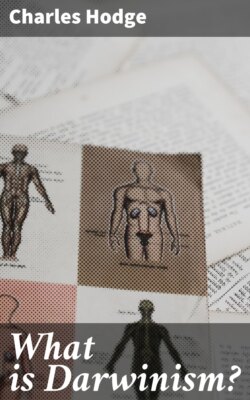Читать книгу What is Darwinism? - Charles Russell Hodge - Страница 5
На сайте Литреса книга снята с продажи.
FOOTNOTES:
ОглавлениеTable of Contents
[1] Evidences of Man's Place in Nature. London, 1864, p. 57.
[2] The two facts which are commonly urged as inconsistent with Theism, are the existence of misery in the world, and the occurrence of undeveloped or useless organs, as teeth in the jaws of the whale and mammæ on the breast of a man. As to the former objection, sin, which is the only real evil, is accounted for by the voluntary apostasy of man; and as to undeveloped organs they are regarded as evidences of the great plan of structure which can be traced in the different orders of animals. These unused organs were—says Professor Joseph Le Conte, in his interesting volume on Religion and Science, New York, 1874, p. 54—regarded as blunders in nature, until it was discovered that use is not the only end of design. "By further patient study of nature," he says, "came the recognition of another law beside use—a law of order underlying and conditioning the law of use. Organisms are, indeed, contrived for use, but according to a preordained plan of structure, which must not be violated." It is of little moment whether this explanation be considered satisfactory or not. It would certainly be irrational to refuse to believe that the eye was made for the purpose of vision, because we cannot tell why a man has mammæ. A man might as well refuse to admit that there is any meaning in all the writings of Plato, because there is a sentence in them which he cannot understand.
